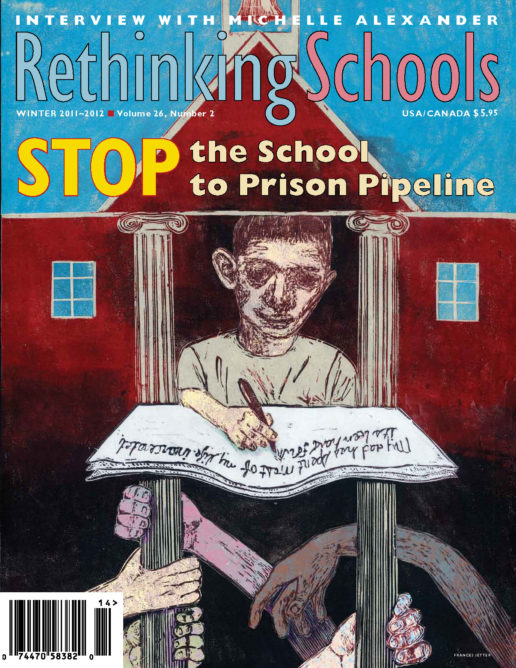Preview of Article:
Teaching the Prison Industrial Complex
Illustrator: Ethan Heitner
“Harm comes from prior harm.” As Deandra says this, I am sitting in the back of my classroom, taking notes. My students are sitting in a circle in the middle of the room, talking to each other about the questions on the board: “What is the purpose of prison? Do prisons work?” In front of them are annotated readings, lecture notes, and typed response papers. They seem to have forgotten that I am there.
Deandra and Lee are discussing what would happen if there were no prisons. Deandra has just finished telling the story of a boy who, fearful of his abusive father, suffocates a girl rather than get in trouble for having a guest over when he is not supposed to. In this case, who should be punished? The boy who is clearly old enough to know his actions are wrong? The father who has instilled such tremendous fear in his son?
If there were no prisons, how would human beings respond to harm like this? Deandra and Lee wrestle with what Deandra has raised: “Harm comes from prior harm.” People harm others when they have been harmed themselves—by abuse, poverty, trauma—but prison does not address this prior harm. According to Deandra, it only adds a new layer of trauma to that individual, their family, and their community. As Roberto points out, “When you hurt a person, you hurt a bunch of people connected to that person.” Therefore, prison not only harms inmates, but their families and communities as well. But what response to harm is fair to victim, perpetrator, and community? What can stop the cycle of violence?

